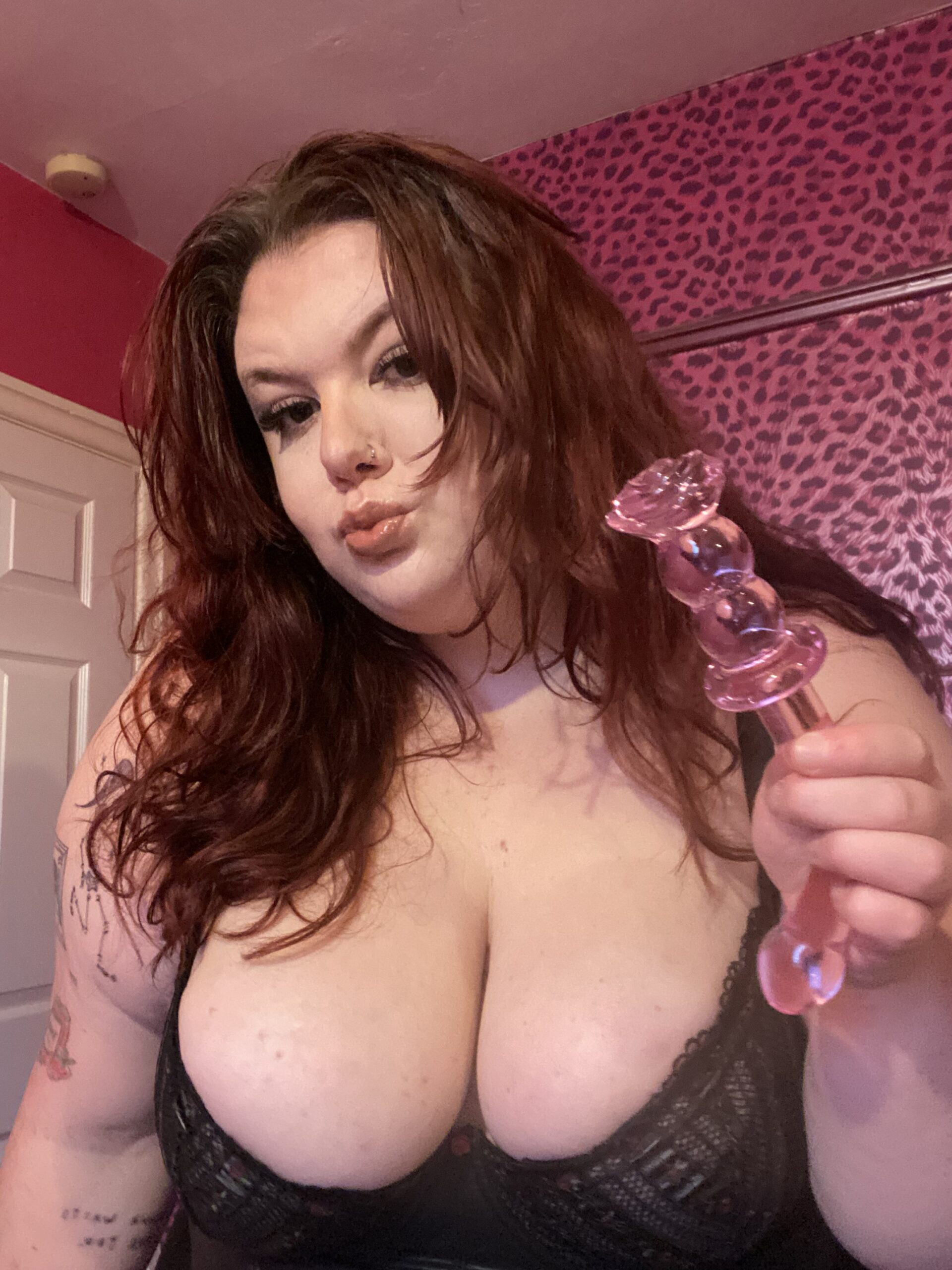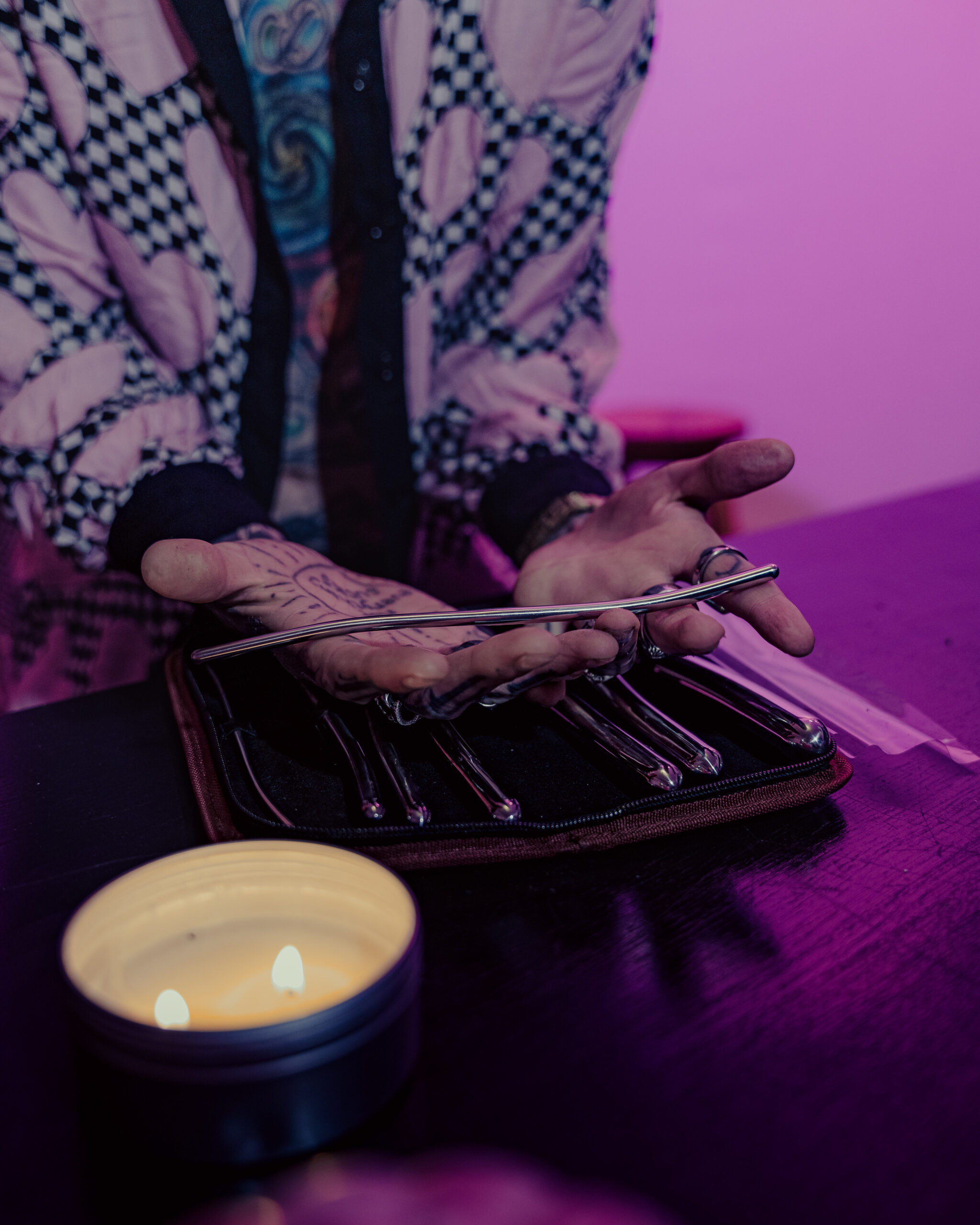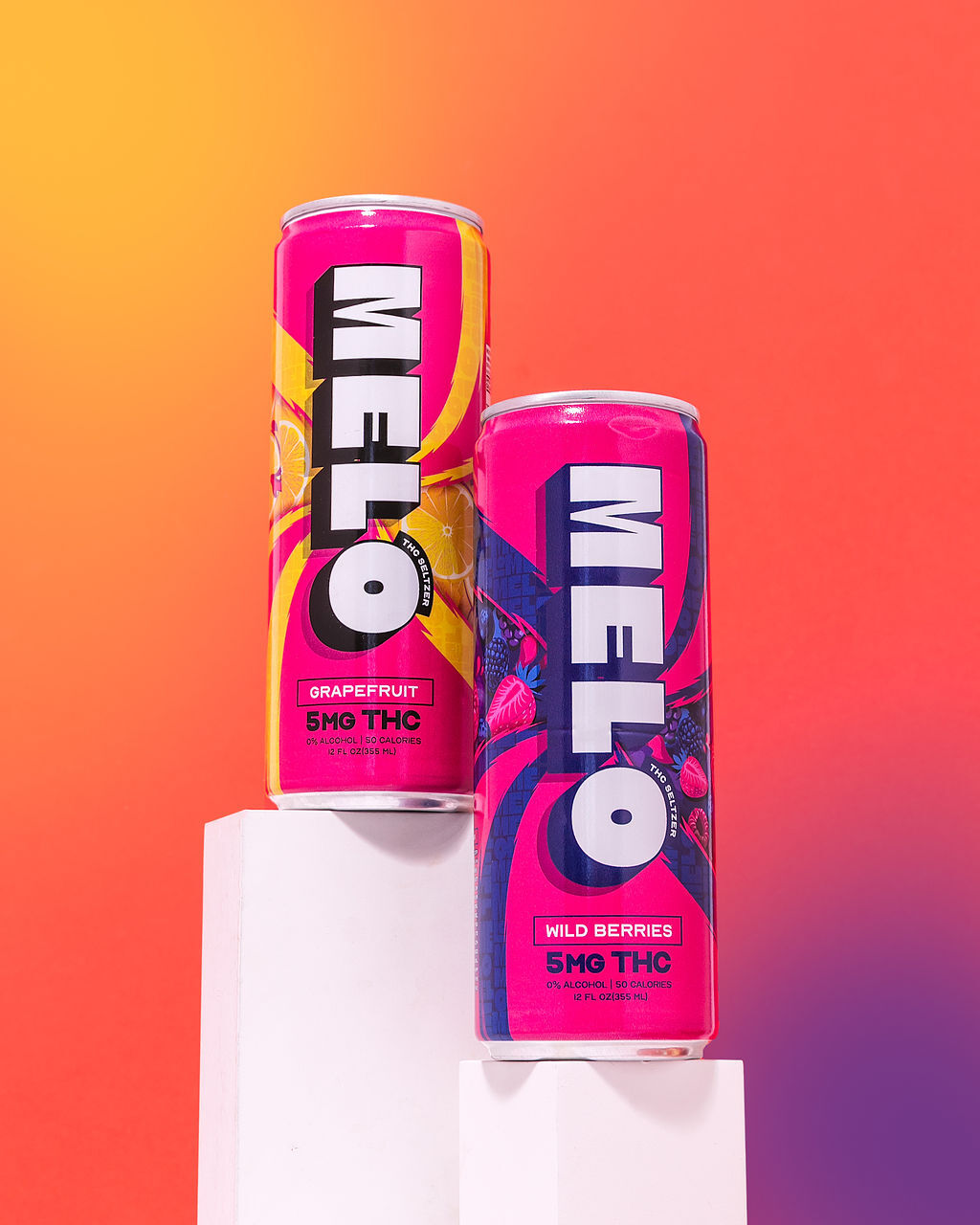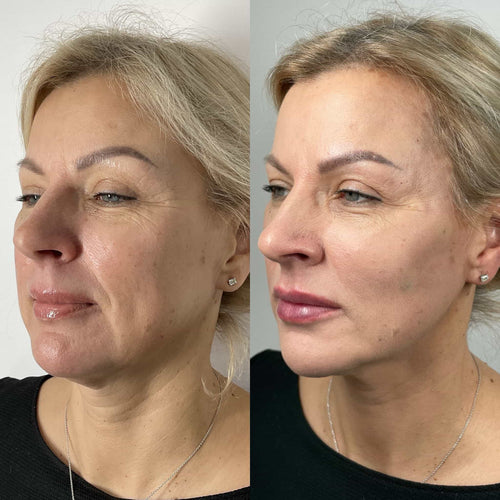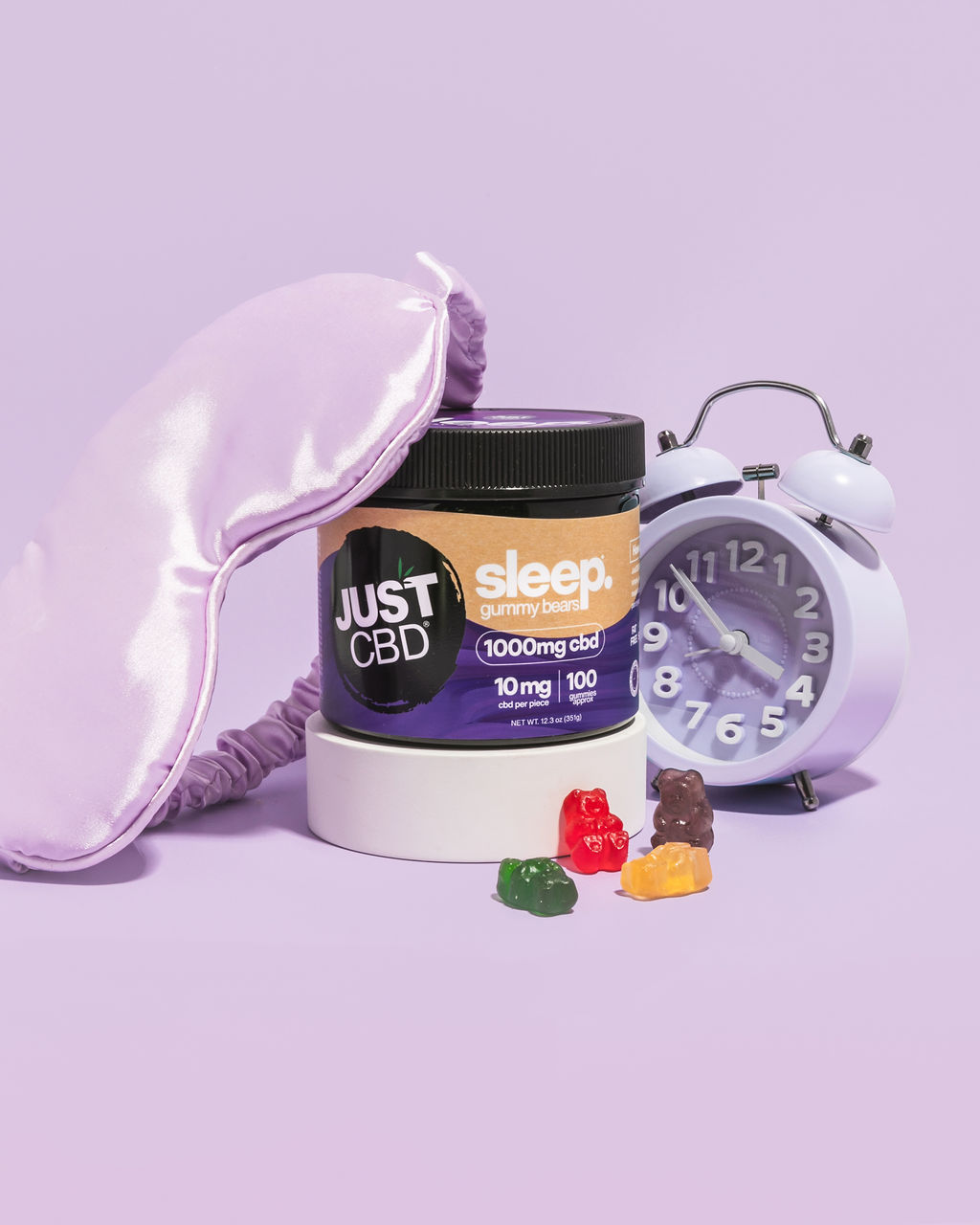Reserve a Dermal Filler Consultation with Dr. Laura Geige
Dermal Fillers
Hyaluronic Acid (HA)
Dermal fillers are cosmetic injections used to add volume and fullness to the skin, smoothing out wrinkles and enhancing facial features.
Hyaluronic acid (HA) is a naturally occurring substance in the body that helps retain moisture and provide structural support to the skin. It’s a popular ingredient in dermal fillers because it’s biocompatible, meaning it’s well-tolerated by the body, and it can be easily injected.
The longevity of dermal fillers varies depending on several factors, including the type of filler used, the area treated, individual metabolism, and lifestyle.
Hyaluronic acid fillers generally last between 6 to 18 months.
Other types of fillers, such as those containing poly-L-lactic acid (PLLA) or calcium hydroxylapatite (CaHA), can last longer, potentially up to two years or more.
These long-lasting fillers work differently than HA fillers. They stimulate the body’s own collagen production, which gradually adds volume over time.
For individuals seeking a more permanent solution, there are synthetic fillers available that can last several years. However, these fillers often have a higher risk of complications and require careful consideration.
It’s important to consult with a qualified dermatologist or plastic surgeon to discuss your individual needs and goals.
They can recommend the most appropriate type of filler and provide guidance on realistic expectations for longevity.

Types of HA Fillers:
Dermal fillers are injectable substances used to restore volume and fullness to the skin, smooth out wrinkles, and enhance facial contours.

Hyaluronic acid (HA) fillers are a popular type of dermal filler due to their versatility, safety, and relatively long-lasting results.
Here’s an overview of common HA fillers and their typical longevity:
- Juvéderm XC Family:**
- Juvéderm Voluma XC: designed for cheek augmentation, typically lasts 18-24 months.
- Juvéderm Vollure XC: targets moderate to severe nasolabial folds (smile lines), lasting 18-24 months.
- Juvéderm Volbella XC: used for subtle lip enhancement and fine lines around the mouth, typically lasting 6-18 months.
- Juvéderm Ultra XC: suitable for smoothing moderate wrinkles and folds, generally lasting 6-9 months.
- Restylane Family:**
- Restylane Lyft: for cheek augmentation and contouring, lasting about 12-18 months.
- Restylane Refyne: addresses nasolabial folds and marionette lines (lines extending from the corners of the mouth), typically lasting 12-18 months.
- Restylane Defyne: targets deeper nasolabial folds and smile lines, often lasting up to 18 months.
- Restylane Silk: specifically for lip augmentation and fine lines around the mouth, typically lasting 6-9 months.
- Belotero Balance:**
- Type and brand of filler
- Location of injection
- Individual metabolism and skin elasticity
- Lifestyle factors (sun exposure, smoking)
-
Juvederm XC : This line includes a range of fillers designed for moderate to severe facial wrinkles and folds, lip augmentation, and cheek enhancement. It typically lasts 6-18 months.
-
Juvederm Voluma XC: Formulated specifically for adding volume and lifting cheeks, it generally lasts 18-24 months.
-
Juvederm Vollure XC: This filler is designed to smooth moderate to severe facial wrinkles around the nose and mouth (nasolabial folds) and lasts up to 18 months.
-
Juvederm Ultra XC and Ultra Plus XC : These fillers are used for lip augmentation, smoothing fine lines around the mouth, and adding fullness to cheeks. Their duration is typically 6-12 months.
- Specific product used: Different Restylane formulations are designed for different purposes and depths of injection, with varying durations of effect.
- Individual metabolism and skin type
- Area of injection
- Lifestyle factors (e.g., sun exposure, smoking)
- Restylane Lyft: Up to 18 months
- Restylane Refyne and Restylane Defyne: Up to 12 months
- Restylane Silk: 6 to 9 months
- Hyaluronic Acid (HA) fillers: These are generally temporary, lasting anywhere from 6 months to 2 years. Newer HA formulas with larger molecules tend to last longer.
- Calcium Hydroxylapatite (CaHA): CaHA fillers are also considered semi-permanent and typically last for 1-2 years.
- Polylactic Acid (PLA) fillers: PLA is a biostimulatory filler that stimulates collagen production. It offers a longer lifespan, with results lasting up to 2-5 years.
- Polymethyl methacrylate (PMMA): PMMA fillers are considered permanent and can last for several years or even indefinitely. However, they carry a higher risk of complications.
-
Hyaluronic acid (HA) fillers: These are the most common type and typically last 6 months to 2 years. Popular brands include Restylane, Juvederm, and Belotero.
-
Calcium hydroxylapatite (CaHa) fillers: Made from a mineral found in bones and teeth, these fillers can last up to 18 months.
-
Poly-L-lactic acid (PLLA) fillers: These stimulate collagen production, leading to longer-lasting results that can last 2 years or more.
- Biocompatible and Natural Material: CaHA is a naturally occurring mineral found in our bones and teeth. This biocompatibility means it integrates well with the body, minimizing the risk of rejection or allergic reactions.
- Stimulates Collagen Production: CaHA doesn’t just add volume; it also acts as a scaffold, prompting the body to produce its own collagen. This natural collagen production helps maintain the filler’s effects and results in longer-lasting improvement.
- Individual metabolism
- Placement and depth of injection
- Lifestyle factors (sun exposure, smoking)
- Amount of filler used
- Individual Variation:**
- Placement and Product Type:
- Sun Exposure and Skin Care:**
- Hyaluronic Acid Fillers:
- These are among the most popular fillers due to their natural-looking results and relatively short recovery time.
- They can last anywhere from 6 to 18 months, depending on the specific product and the area treated.
- Calcium Hydroxylapatite (CaHA) Fillers:
- CaHA fillers are known for their durability and ability to stimulate collagen production.
- They can last from 12 to 18 months.
- Poly-L-Lactic Acid (PLLA) Fillers:
- PLLA fillers are unique in that they gradually break down over time, stimulating the body’s natural collagen production.
- The initial results can last for 12 to 18 months, but continued collagen production can provide longer-lasting effects.
- Polymethylmethacrylate (PMMA) Fillers:
- PMMA fillers are the longest-lasting option, with results lasting 5 to 10 years or even longer.
- However, they are not as reversible as other types of fillers and carry a higher risk of complications.
- Collagen Stimulation: PLLA is a biodegradable synthetic polymer that acts as a scaffold for collagen growth. As the body metabolizes PLLA over time, it triggers a natural increase in collagen production, providing long-term volume and structural support.
- Gradual Breakdown: PLLA breaks down slowly and gradually, unlike hyaluronic acid fillers which are reabsorbed more quickly. This slow breakdown contributes to the longevity of its effects.
- Versatility: PLLA can be used for various aesthetic purposes, including:
- Facial contouring
- Chin augmentation
- Cheek augmentation
- Acne scar treatment
- Hand rejuvenation
A versatile filler used for smoothing wrinkles and restoring volume in the cheeks and lips, typically lasting 6-12 months.
Several factors can influence the longevity of dermal fillers, including:
* Juvederm
Dermal fillers are injectables made from various gel-like substances that are used to add volume and fullness to the skin, smoothing wrinkles and folds, enhancing lips, and improving facial contours.
Juvederm is a popular brand of dermal filler comprised of hyaluronic acid (HA), a naturally occurring substance in the body that helps to maintain hydration and elasticity.
The longevity of Juvederm fillers varies depending on several factors, including the specific type of Juvederm used, the area being treated, individual metabolism, and lifestyle habits.
Juvederm comes in different formulations designed for various applications:
It’s important to note that these are general estimates, and individual results may vary.
To maximize the longevity of your Juvederm results, it’s crucial to follow your practitioner’s post-treatment instructions carefully and maintain a healthy lifestyle.
This includes protecting your skin from excessive sun exposure, using sunscreen daily, avoiding smoking, and staying hydrated.
Book a Dermal Filler Consultation at It’s Me and You Clinic with Dr. Laura Geige
* Restylane
Dermal fillers are a popular non-surgical cosmetic procedure used to add volume and fullness to various areas of the face, smoothing wrinkles and enhancing facial features.
Restylane is a brand name for a family of injectable dermal fillers composed of hyaluronic acid (HA). HA is a naturally occurring substance in the body that attracts and retains water, providing hydration and plumpness to skin.
The longevity of Restylane fillers varies depending on several factors, including:
Generally, Restylane fillers can last anywhere from 6 months to 18 months.
Here’s a breakdown of the typical duration for some popular Restylane products:
It’s important to note that these are just estimates, and individual results may vary.
To maximize the longevity of your Restylane fillers, it is crucial to follow your provider’s post-treatment instructions carefully.
This includes avoiding sun exposure, excessive heat, and strenuous activity for a certain period after treatment.
Regular touch-up appointments are usually required to maintain the desired results.
Lifespans:**
Dermal fillers are injections that add volume to areas of the face, smoothing wrinkles and restoring lost fullness. Different types of fillers have varying lifespans, typically ranging from a few months to several years.
Hyaluronic acid (HA) based fillers tend to be the most common and are known for their shorter lifespan, usually lasting 6-18 months. They attract and hold water in the skin, providing immediate volume.
Calcium hydroxylapatite (CaHA) fillers are another popular choice, offering a slightly longer duration of about 12-18 months. CaHA is a biocompatible material that stimulates collagen production, leading to gradual but lasting results.
Poly-L-lactic acid (PLLA) fillers are designed to last the longest among common injectables, typically for 18 months to 2 years. PLLA gradually breaks down and stimulates natural collagen growth, providing a long-lasting volumizing effect.
It’s important to remember that individual results can vary depending on factors such as skin type, location of injection, lifestyle, and the specific filler used. Consulting with a qualified and experienced injector is crucial for determining the most suitable filler type and achieving optimal, personalized outcomes.
* Generally last 6 to 18 months
Dermal fillers are injectable substances used to restore volume, smooth wrinkles, and enhance facial features. They typically consist of hyaluronic acid (HA), a naturally occurring substance in the body that attracts and holds water.
The duration of results from dermal fillers varies depending on several factors, including the type of filler used, the individual’s metabolism, skin elasticity, and lifestyle. Generally, fillers last anywhere from 6 to 18 months.
Hyaluronic acid (HA) based fillers are considered the most popular type, with varying degrees of cross-linking that influence their longevity. Highly cross-linked HA fillers tend to last longer than less cross-linked ones.
Calcium hydroxylapatite (CaHa) is another popular filler option known for its long-lasting results. It typically lasts 12 to 18 months, sometimes even longer.
Poly-L-lactic acid (PLLA) fillers stimulate collagen production in the skin, resulting in a gradual volumization effect that can last up to 2 years or more.
It’s important to consult with a qualified and experienced injector to determine which filler is most suitable for individual needs and desired outcomes. They will assess facial anatomy, skin type, and personal goals to recommend the best options and realistic expectations for longevity.
Factors Affecting Lifespan:**
Dermal fillers are a popular cosmetic treatment used to restore volume, smooth wrinkles, and enhance facial contours. While many fillers offer impressive results, their longevity varies depending on several factors.
Here’s a breakdown of key factors influencing dermal filler lifespan:
* **Type of Filler:**
Reserve Your Dermal Filler Consultation with Dr. Laura Geige
* **Injection Site:** Fillers in areas with more movement, such as the lips or smile lines, tend to break down faster than those injected in areas with less movement, such as the cheeks or jawline.
* **Individual Metabolism:** Body chemistry and metabolism play a role. Some people naturally metabolize fillers more quickly than others.
* **Lifestyle Factors:** Smoking, excessive sun exposure, and dehydration can all contribute to faster filler breakdown.
It’s crucial to discuss your individual needs, lifestyle, and desired results with a qualified and experienced injector to determine the most suitable type of filler and anticipate its lifespan.
* Individual metabolism
Dermal fillers are gel-like substances injected into the skin to add volume, smooth wrinkles, and enhance facial features. The duration they last depends on various factors, including the type of filler, individual metabolism, injection site, and lifestyle.
Different types of dermal fillers are composed of different materials, each with varying lifespans:
Individual metabolism plays a crucial role in filler longevity. People who metabolize substances quickly may see fillers break down faster than those with slower metabolisms. Factors like age, genetics, and overall health can influence metabolic rate.
Lifestyle factors also affect filler duration:
*
Sun exposure: UV rays can break down fillers, leading to a shorter lifespan.
*
Smoking: Nicotine constricts blood vessels, hindering nutrient delivery to the injected area and potentially reducing filler longevity.
*
Facial expressions: Frequent smiling, frowning, or squinting can put stress on the filler, causing it to break down faster.
Injection site also matters. Fillers tend to last longer in areas with less movement, such as cheeks, than in areas with more dynamic motion, like around the mouth.
It’s important to consult with a qualified and experienced injector to determine the most appropriate filler for your individual needs and expectations.
* Location of injection
Dermal fillers are injectables designed to add volume and plumpness to the skin, smoothing out wrinkles and restoring facial contours. Different types of fillers contain varying ingredients and have different longevity.
Fillers commonly used for volumizing cheeks, temples, and chin include hyaluronic acid (HA) fillers like Juvederm Voluma XC, Restylane Lyft, and Belotero Balance. HA fillers typically last 12 to 18 months but can vary depending on individual factors such as metabolism, skin thickness, and the treated area.
For nasolabial folds (laugh lines), marionette lines, and other moderate wrinkles, hyaluronic acid fillers like Juvederm Volbella XC and Restylane Refyne are popular choices. These fillers often last 6 to 12 months.
Hyaluronic acid fillers used for lip augmentation, such as Juvederm Ultra XC and Restylane Silk, can provide noticeable plumpness for 6 to 9 months.
Calcium hydroxylapatite (CaHA) fillers like Radiesse are known for their longer-lasting results, often lasting 12 to 18 months. They are commonly used for cheek augmentation, jawline definition, and smoothing deeper wrinkles.
Poly-L-lactic acid (PLLA) filler Sculptra Aesthetic is unique as it stimulates collagen production, leading to a gradual volumizing effect that lasts 24 months or longer. It’s often chosen for restoring volume in the cheeks and temples.
Microneedling with radiofrequency (RF) can also stimulate collagen production and improve skin texture, providing long-lasting results. This treatment involves using tiny needles to create micro-injuries in the skin, triggering the body’s natural healing process.
When considering fillers for longevity, factors like individual metabolism, lifestyle, sun exposure, and skin type play a role. Consultation with a qualified medical professional is essential to determine the most suitable filler and treatment plan based on your needs and expectations.
* Lifestyle factors
Dermal fillers are a popular non-surgical cosmetic treatment used to add volume, reduce wrinkles, and enhance facial contours. They work by injecting gel-like substances beneath the skin, plumping up areas that have lost volume due to aging or other factors.
The longevity of dermal fillers varies depending on several factors, including the type of filler used, the area treated, individual metabolism, and lifestyle choices.
Let’s explore some **lifestyle factors** that can influence how long dermal fillers last:
Sun Exposure: Excessive sun exposure can break down collagen and elastin, the proteins that give skin its structure. This can lead to premature aging and shorten the lifespan of dermal fillers.
Protecting your skin from the sun with **sunscreen** (SPF 30 or higher), wearing a hat, and seeking shade can help extend the results of filler treatments.
Smoking: Smoking accelerates collagen breakdown and reduces blood flow to the skin. This can significantly reduce the longevity of dermal fillers and make it more difficult for your body to heal after treatment.
Quitting smoking is the best way to improve skin health and enhance the effectiveness of any cosmetic procedure, including filler injections.
Alcohol Consumption: Excessive alcohol intake can dehydrate the skin and hinder collagen production. While moderate consumption may not have a major impact on filler longevity, excessive drinking can contribute to premature aging and affect treatment outcomes.
Diet: A healthy diet rich in fruits, vegetables, and antioxidants supports overall skin health and collagen production. Consuming foods with vitamin C, zinc, and other essential nutrients can help maintain the integrity of your skin and potentially extend the effects of dermal fillers.
**Hydration:** Drinking plenty of water is crucial for maintaining skin elasticity and plumpness. Adequate hydration can help your filler results look their best and last longer.
Other Factors:
Besides lifestyle choices, other factors influencing filler longevity include genetics, skin type, the injection technique used by the provider, and the specific type of filler chosen. Discuss these factors with your dermatologist or plastic surgeon to determine the best treatment plan for your individual needs.
Calcium Hydroxylapatite (CaHA)
Dermal fillers are injectables used to restore volume and fullness to the skin, smoothing wrinkles, enhancing lips, and shaping facial contours.
These fillers come in various forms, with different ingredients and longevity. When it comes to lasting power, Calcium Hydroxylapatite (CaHA) stands out as a strong contender.
Here’s why:
While individual results can vary based on factors like skin type, lifestyle, and injection technique, CaHA fillers are known for their relatively long lifespan compared to other types of fillers.
The average duration of CaHA filler effects is typically around 18-24 months. Some individuals may even experience lasting benefits for longer periods.
It’s important to note that regular touch-up appointments are generally recommended to maintain the desired results.
Types of CaHA Fillers:
Dermal fillers are cosmetic injections used to add volume and fullness to various areas of the face, smoothing wrinkles and enhancing contours. They work by injecting a gel-like substance into the skin, which stimulates collagen production and plumps up the treated area.
One popular type of dermal filler is calcium hydroxylapatite (CaHA). CaHA fillers are made from a biocompatible material that is naturally found in bones and teeth. They are known for their ability to provide long-lasting results, often lasting up to two years.
Here are some details about different types of CaHA fillers:
**Radiesse:** Radiesse is a well-established CaHA filler that has been used for several years. It is particularly effective for treating deeper wrinkles and folds, such as marionette lines and the parentheses around the mouth.
**Bellafill:** Bellafill is another type of CaHA filler that also contains polymethylmethacrylate (PMMA) microspheres. PMMA is a long-lasting synthetic material that helps to further enhance the longevity of Bellafill results. It can be used to fill deeper wrinkles, restore volume to cheeks and lips, and even address acne scars.
The duration of CaHA filler results can vary depending on several factors, including:
While CaHA fillers are generally known for their longevity, they may not last as long as some other types of dermal fillers that use hyaluronic acid (HA) gel. HA fillers often have a shorter lifespan, typically lasting 6 to 18 months.
The best type of dermal filler for you will depend on your individual needs and goals. Consult with a qualified medical professional to discuss which filler is most suitable for achieving your desired results.
* Radiesse
Dermal fillers are a popular cosmetic procedure used to restore volume and smooth wrinkles. They work by injecting a gel-like substance beneath the skin, plumping up areas that have lost fullness over time.
Radiesse is one type of dermal filler that stands out for its longevity. It’s made from calcium hydroxylapatite microspheres suspended in a gel carrier. This unique composition gives Radiesse several key advantages.
Unlike hyaluronic acid fillers, which are naturally absorbed by the body over time, Radiesse stimulates collagen production. Collagen is a protein that provides structure and support to the skin, and its production naturally declines as we age.
By triggering collagen growth, Radiesse not only plumps up the treated area immediately but also helps to improve skin texture and elasticity over time. This means results can last significantly longer than hyaluronic acid fillers.
On average, Radiesse injections can last anywhere from 12 to 24 months, sometimes even longer depending on individual factors like skin type, lifestyle, and the treated area.
For those seeking a long-lasting solution for facial volume loss and wrinkles, Radiesse is an excellent option.
Lifespans:**
Dermal fillers are injectables designed to plump up areas of the face that have lost volume due to aging or other factors. They work by adding substance beneath the skin, restoring a youthful appearance.
The longevity of dermal fillers varies depending on several factors, including the type of filler used, the individual’s metabolism and lifestyle, and the treated area.
Here’s a breakdown of common filler types and their typical lifespans:
**Hyaluronic Acid (HA) Fillers:** These are some of the most popular dermal fillers. They attract and hold water, providing instant volume and hydration to the skin. HA fillers are generally temporary, lasting anywhere from 6 months to 18 months.
**Calcium Hydroxylapatite (CaHa) Fillers:** CaHa fillers are known for their ability to stimulate collagen production, which can lead to longer-lasting results. They typically last 12 to 18 months.
**Polylactic Acid (PLA) Fillers:** These fillers work gradually over time, stimulating the body’s own collagen production. PLA fillers can provide lasting results for 12 to 24 months or even longer.
**Polymethylmethacrylate (PMMA) Fillers:** PMMA fillers are considered permanent, but they also carry a higher risk of complications compared to other types.
It’s important to consult with a qualified and experienced injector to determine the best type of filler for your individual needs and expectations.
* Can last up to 12 years
Dermal fillers are a popular cosmetic treatment designed to plump up and smooth the skin, reducing wrinkles, restoring volume loss, and enhancing facial contours. While many different types of fillers exist, they generally fall into two main categories: hyaluronic acid (HA) based fillers and non-HA fillers.
Hyaluronic Acid Fillers:
These are the most common type of dermal filler, made from a naturally occurring substance found in our bodies. HA attracts and holds water, giving skin its plumpness and elasticity. Popular brands include Juvederm, Restylane, and Belotero. The longevity of HA fillers varies depending on the product used and individual factors like metabolism and lifestyle.
Non-HA Fillers:
These fillers are typically made from synthetic materials such as polymethylmethacrylate (PMMA) or calcium hydroxylapatite. PMMA fillers, sometimes referred to as permanent fillers, are designed to last for several years, potentially up to 12 years or more, due to their inert nature.
Long-Lasting Fillers – The “12 Year” Claim:
While some non-HA fillers, particularly those containing PMMA, are marketed as lasting for 12 years or longer, it’s essential to understand that this is an estimate. The actual duration of results can vary significantly based on individual factors such as skin type, age, and lifestyle.
Important Considerations:
Everyone metabolizes substances differently, meaning some individuals may experience fillers lasting longer than others.
The location of filler injection and the specific product used can impact longevity. For instance, deeper injections tend to last longer than superficial ones.
UV radiation can break down fillers over time, so diligent sun protection is crucial for maximizing results.
Regular follow-up appointments with a qualified aesthetic practitioner are essential to monitor filler placement and address any concerns or potential complications. It’s important to have realistic expectations about the duration of filler results and understand that touch-up treatments will likely be required to maintain desired outcomes.
Benefits:**
Dermal fillers are injectable substances used to enhance facial features and reduce the appearance of wrinkles, folds, and volume loss.
They work by adding volume to targeted areas, plumping up skin and smoothing out lines.
Different types of dermal fillers are available, each with varying ingredients, longevity, and intended use.
The longevity of a dermal filler depends on several factors, including the type of filler used, individual metabolism, lifestyle, and the treated area.
Here are some of the most common types of dermal fillers and their approximate longevity:
It’s important to note that these are just estimates, and individual results may vary.
Consulting with a qualified and experienced injector is crucial for determining the best type of filler and treatment plan for your specific needs and goals.
* Stimulates collagen production, leading to longerlasting results
Dermal fillers are a popular cosmetic procedure used to restore volume, smooth wrinkles, and enhance facial contours.
These injectable gels are made from various substances, including hyaluronic acid (HA), poly-L-lactic acid (PLLA), calcium hydroxylapatite (CaHA), and polymethyl methacrylate (PMMA).
When it comes to longevity, **hyaluronic acid fillers** typically last between 6 months to 2 years, depending on the specific product used, the area treated, and individual factors like skin type and metabolism.
Some HA fillers are designed to be longer-lasting, while others are meant for more subtle, temporary results.
**Poly-L-lactic acid (PLLA)** fillers work differently than HA fillers. They stimulate your body’s natural collagen production over time.
This gradual process of collagen stimulation leads to longer-lasting results, often lasting 1 to 2 years or even longer.
**Calcium hydroxylapatite (CaHA)** fillers are another option that can provide long-lasting volume and wrinkle reduction, with results typically lasting 12 to 18 months.
**Polymethyl methacrylate (PMMA)** fillers are known for their durability but require more careful consideration due to potential risks associated with their permanency.
They can last for several years or even indefinitely.
Poly-L-Lactic Acid (PLLA)
Types of PLLA Fillers:
Poly-L-Lactic acid (PLLA) is a synthetic, biodegradable polymer derived from lactic acid, a naturally occurring compound found in the body.
It’s known for its biocompatibility and long-lasting results, making it a popular choice for facial volumization and wrinkle reduction.
Here’s a breakdown of PLLA fillers and their longevity:
1. Sculptra Aesthetic (PLLA)
– This is the most well-known brand name for PLLA filler.
– It’s injected deeper into the skin to stimulate collagen production and provide long-term volume enhancement.
– Results can last for 2 years or more, with some individuals experiencing even longer-lasting effects.
– Multiple treatment sessions are typically required for optimal results.
PLLA fillers generally offer a longer duration of effect compared to hyaluronic acid (HA) fillers.
This is because PLLA doesn’t simply fill in wrinkles but stimulates the body’s own collagen production, resulting in a more gradual and sustained volumization effect.
However, individual results may vary depending on factors such as age, skin type, lifestyle, and treatment area.
* Sculptra
Poly-L-lactic acid (PLLA), sold under the brand name Sculptra, is a biocompatible and biodegradable synthetic polymer used in aesthetic medicine for facial rejuvenation.
Sculptra works differently than hyaluronic acid fillers. Instead of instantly adding volume, it stimulates collagen production over time. PLLA particles are injected into the dermis, triggering the body’s natural healing response. This leads to the gradual formation of new collagen fibers, which gradually fill in wrinkles and restore lost facial volume.
This unique mechanism gives Sculptra a longer-lasting effect compared to hyaluronic acid fillers. While hyaluronic acid provides immediate volume that typically lasts 6-18 months, PLLA results are more subtle but can last for up to two years or even longer with maintenance treatments.
Sculptra is often used to address moderate to severe facial aging, including wrinkles around the mouth and nose, cheek hollows, and jowls. It can also be used to improve skin laxity and contour the jawline.
The treatment involves multiple sessions spaced several weeks apart. This allows the body time to produce new collagen between injections.
Lifespans:
Poly-L-lactic acid (PLLA) is a synthetic, biodegradable polymer that has gained popularity as a dermal filler due to its longevity and ability to stimulate collagen production.
When injected into the skin, PLLA gradually breaks down over time. This process of degradation leads to a slow and natural increase in volume and fullness. Unlike some fillers that simply plump up the skin temporarily, PLLA stimulates the body’s own collagen production, leading to more lasting results.
The lifespan of PLLA filler varies depending on several factors, including the individual’s metabolism, injection technique, and the treated area. On average, PLLA results can last for 12 to 18 months or even longer in some cases.
PLLA is a biocompatible material that is generally well-tolerated. However, as with any medical procedure, there are potential risks and side effects associated with its use. These may include redness, swelling, bruising, itching, and in rare cases, infection or allergic reaction.
It’s important to consult with a qualified and experienced injector to determine if PLLA is the right filler for you and to ensure safe and effective treatment.
* Most longlasting filler, potentially lasting up to 2 years or more
Poly-L-Lactic Acid (PLLA) stands out as a long-lasting dermal filler, potentially providing results for 2 years or more. Unlike hyaluronic acid fillers that are gradually absorbed by the body, PLLA stimulates collagen production, resulting in a more durable outcome.
Here’s a closer look at what makes PLLA such a lasting filler:
It’s important to note that individual results may vary depending on factors like age, skin type, and the amount of filler injected. Consultation with a qualified and experienced injector is crucial to determine if PLLA is the right choice for your desired outcome.
Elizabeth Joy Photo Fashionably Balanced Zoe Mallett Coaching En Bloch Hotels Couture Lust




